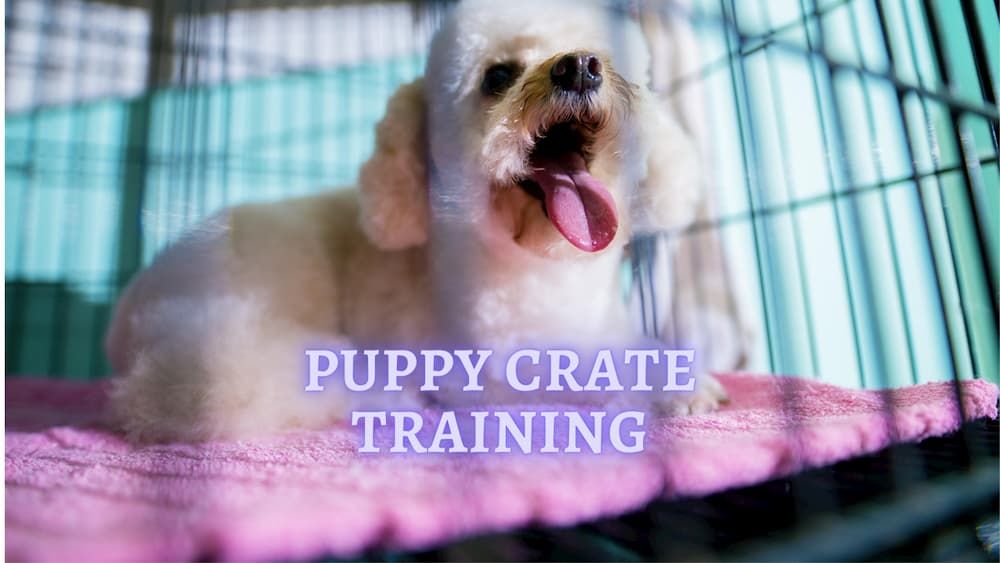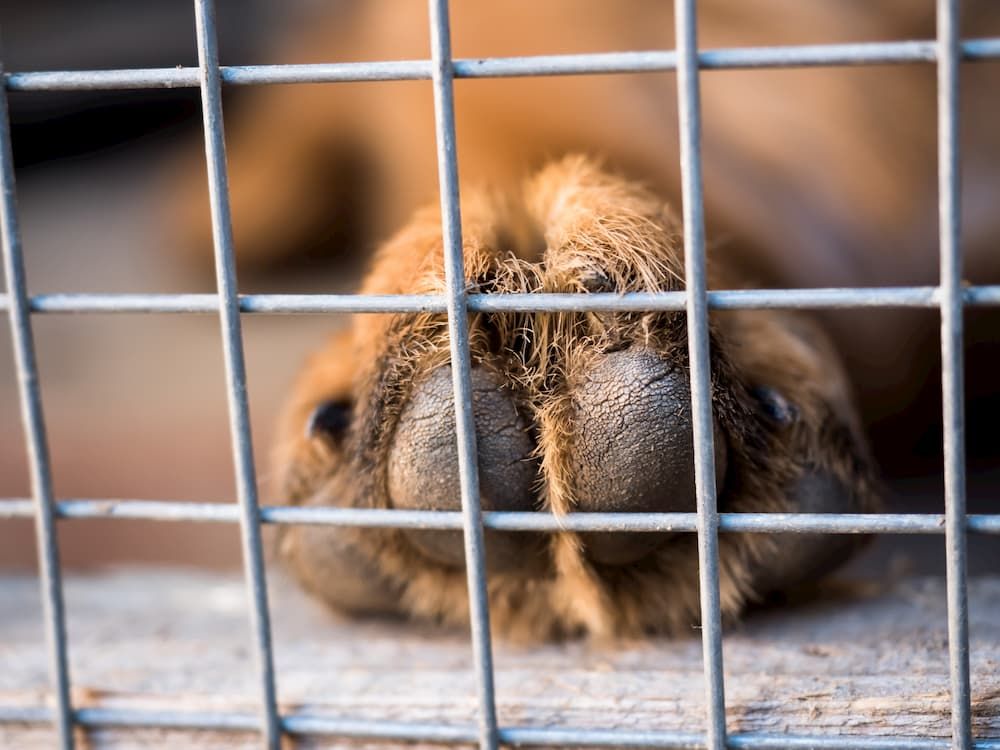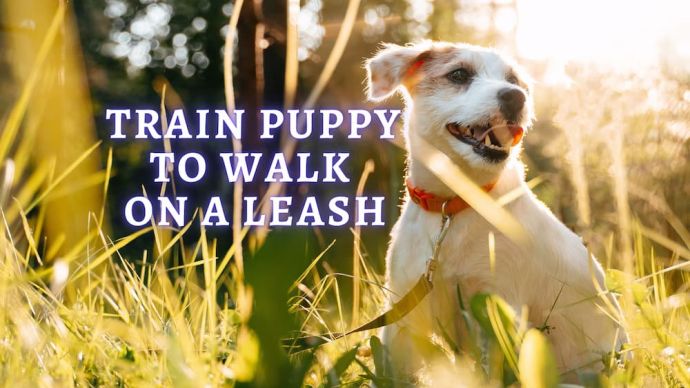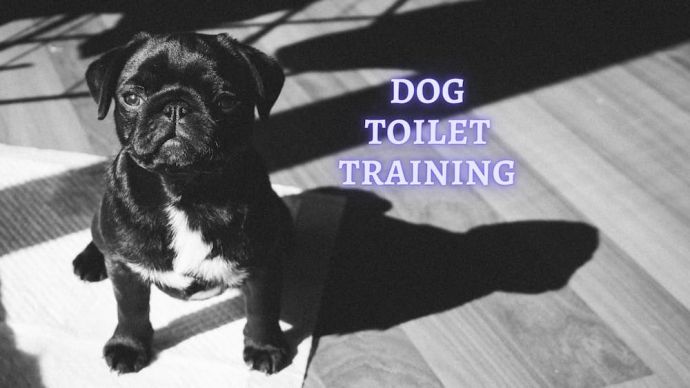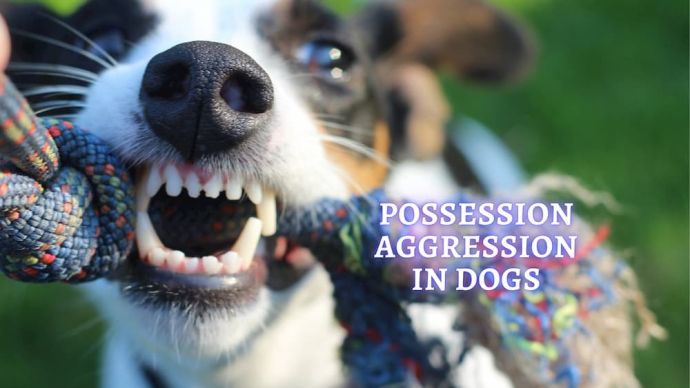Puppy Crate Training: Essential Tips On Crate Training a Puppy
Written by:
Author: Kristina Tyler
Kristina is a full-time freelance writer who specializes in pet care topics. With her life-long love of animals and passion for learning, she thoroughly enjoys researching and writing about how to care for pets.
View all 7 articlesLearn about our editorial process and veterinary review board.
Viewed: 179
Updated on: 09/09/2022
For dog owners who need to leave the house without fear of their puppy causing damage to property and themselves.
Crate training or puppy crating is a common tool for new pet parents who are looking to promote positive behaviours and reduce damage/injuries. Unfortunately, it is impossible for you to spend every minute of every day with your new pup. The vast majority of people still have to get their hours of sleep, while also leaving the house to go to work.
Therefore, the puppy must grow used to occupying their own time without damaging the house or causing injury to themselves. Confining them to their own small and private area, like a puppy cage, is the perfect way to do this. This is often only a temporary measure to instill acceptable behavior before giving them more free reign over certain parts of the house.
How to choose the right cage for a dog?
The correct crate should be spacious enough so the dog can sit freely in it without bending down and touching the ceiling with its head. Also, the puppy should be able to lie down, stretched out at full height, change his position without any problems and turn around. The dog should feel comfortable in the cage.
There are many dog crates at different prices. Some crates look like furniture and can be used as a bedside table. Consider all the pros and cons before making your choice.
There are plastic cages with metal lattice doors and holes for ventilation. These cages are often suitable for air travel, and you can put your dog in it during flights.
There are also cages made of metal bars. They cannot be chewed, and through the walls of such a crate, the dog can see everything that happens from all sides.
There are also puppy crates with walls but no floor. They are suitable for very small dogs because older dogs will be able to move the cage along the floor or even turn it over. You can line the bottom of the hard crate with a fabric that will be easy to wash.
The most common crate is a stationary one consisting of a metal frame made of grating and plastic. It can be used for transportation and for permanent animal maintenance.
The cage must be strong and reliable so that the dog cannot bend the crate and get out of it. It is essential to take into account the likely aggressiveness of the dog. Large dogs can easily dig through a lattice of thin wire.
In addition, when choosing a crate for the height and length of the dog, focus on your dog’s age. If you have just purchased a puppy, then ask for help from the breeder from whom you purchased the dog. Most likely, he/she will immediately tell you the right crate size, since almost all breeders keep their dogs in them.
When choosing a cage, also pay attention to transportation convenience. Many metal cages fold into a compact suitcase, which is convenient to carry.
Is it cruel to crate-train a puppy?
The simple answer is no; crate training is not cruel as long as you conduct it in the correct way. For example, the crate/cage should never be used negatively for punishment. When confining your puppy to a small space when they are bad, you create unhealthy and cruel connotations.
However, if you deck the crate with comfy cushions, toys, and more, the puppy will begin to see it as their own personal space, much like an adult dogs has. It is often a good idea to use the cage as a sleeping space at night and as a safe space while you are out of the house. The last thing you want is for your puppy to have free reign of the house, causing damage to both property and themselves.
Until they are fully trained, it is important always to have one eye on your puppy, something you cannot do while you’re sleeping or out and about.
Don’ts of Crate Training
There are some mistakes that pet parents often make when training their pups to a dog’s crate:
- You can’t take a puppy to a crate as punishment, and you can’t force a dog into a cage.
- Do not lock a four-legged friend in a crate as soon as you have purchased crate training should take place gradually, without putting pressure on the pet’s psyche.
- Do not leave the dog in the crate for a long time – the animal should not be in the cage for more than 6 consecutive hours.
- The dog should not wear a collar if it is inside the crate.
- You can’t leave a dog in a cage without water.
How long can you leave an 8-week-old Puppy in a Crate?
It is important to remember that, like anything, you must first allow your puppy to become used to the crate. Locking them inside and expecting them to spend the night happily is naïve and does not consider the puppy’s feelings. It may take them a while to acclimatize to the new space and even longer to enjoy it.
Therefore, we have created a guide based on the age of your puppy and the duration they should spend in the dog’s crate. We should also note that this duration is based on consecutive minutes, not the total time per day or night.
Often you will be able to give your puppy a quick break/run around before putting them safely back into the cage.
- 8-10 weeks: 30-60 minutes
- 11-14 weeks: 1-3 hours
- 15-16 weeks: 3-4 hours
- 17 weeks and over: 4-6 hours
How long does it take to crate train a puppy?
The time it takes to crate train a puppy can vary, although the time usually varies between days and weeks depending on the temperament and past experiences of the dog in question.
The best way to dog crate train your puppy in record time is to follow this guide:
- Step 1 – Let them get it out of their system – Before start crate training, you should always let your puppy have the chance to relieve themselves outside and get in some good exercise.
- Step 2 – Place comfortable bedding and familiar toys within the cage
- Step 3 – Leave the crate door open for the puppy to explore on their own for the first time. You may have to tempt them in with some dog treats.
- Step 4 – Each time they enter the cage on their own, click with a clicker, or use a marker word to let them know that this is positive behavior. You should then praise them and give them a treat.
- Step 5 – Feed your puppy in the cage a few times to further the positive connotations.
- Step 6 – Once they are more familiar with the crate, you can close the door while they eat and re-open it once they are finished.
- Step 7 – Duration – Put your puppy in the crate for 15 seconds with their favorite toy and the door shut. Let them back out and give them a treat for ten seconds. Then repeat.
- Step 8 – Build up the time spent in the cage to 15 minutes at a time, never leaving their side as you do so. If they are struggling, increase the incentives and throw in easy durations of 30 seconds between the longer spells.
- Step 9 – Distance – Close the crate door and walk away, but only halfway across the room. Walk back, open the crate, and reward them with a treat. Keep doing this until you can walk completely out of sight.
- Step 10 – Walk out of sight and remain there for 15-30 seconds. Keep increasing this time alone in the cage until they are comfortable for 10-minute spells.
READ MORE: Tips on Raising a Puppy
Crate Training Process Tips
To make your dog more comfortable, cover the crate with a cloth. Darkness and lack of prying eyes will help the dog feel safe. But remember that the edges of the blanket or towel can be pulled into the cage and chewed on by the dog if it is bored or nervous.
Make the crate a quiet and safe place. Even if the cage stands in a busy place during the day, it should be quiet at night.
Take your puppy to the potty break at night. The maximum time a puppy at night is 4 hours. Set your alarm to ring every 4 hours (ideally every 2-3 hours). When the alarm goes off, take the puppy to the kitchen or take it outside and then return it to the crate. Try not to talk to the dog or pet it during this process. Pet shouldn’t get the impression that the night is playtime.
What should I put in my puppy’s crate?
The most important thing is designing your puppy crate to be as comfortable and relaxing for the dog as possible. Including plentiful bedding is essential, as your dog will be enjoying plenty of sleep within the crate. You should also include their favourite toys and the items they have grown particularly close to; this should improve their ability to adapt to the crate. Remember, when dealing with young puppies, everything you put into the cage should be chew-proof, as these pups enjoy learning through their teeth.[1]
Having waterproof or washable bedding is also another helpful touch, just in case the puppy has the odd accident within the crate. Some puppies enjoy it if you leave behind an item that smells of you, as it creates the impression that a part of you is still there with them. However, this depends largely on whether the puppy in question is likely to chew toys to pieces.
Regarding food and water, the general advice is that you do not add either to the cage as they only create mess and spillages. It is better to plan your puppies feeding and hydrating either side of their crate training times. However, options are open to you if you feel that you need to add food and water due to the length of their time in the crate.
Tip-proof bowls can be purchased to ensure that your puppy can’t knock it over and spill the food everywhere. Similarly, lickable water bottles can be used similarly to those found on the cages of rabbits and guinea pigs, ensuring that the puppy cannot knock over an entire water bowl. It can also be a handy tool to get your dog to associate their cage with positive memories if you feed them while they are in it.
READ MORE: Puppy Training Tips
It is also important to know what not to put into your puppy’s crate. For example, all collars and name tags should be removed before the puppy enters the crate. These can often become caught in the doors/wires/bars, creating a strangulation hazard. You should also ensure that your puppy crate is not located in the surrounding area of any electrical wires/cords. Puppies have been known to drag them towards the cage as a chew toy, which can have devastating repercussions. This same rule of thumb also extends to poisonous plants that may be located in close proximately to the cage. Move them out of reach.
Finally, ensure that your puppy crate is not located within a direct source of heat/cold. Having the crate sitting in the sunlight, next to a radiator, or next to air conditioning can result in an unbalanced and uncomfortable temperature for your dog.
People also ask:
Is it OK to crate a puppy at night?
To make your dog feel comfortable in the crate at night, make sure that it is well walked before going to bed. Also, pay attention to the fact that the dog was comfortable enough in the cage. There was a warm blanket and its favorite toy. At first, you can place a cell next to your bed and place your four-legged friend in it. Also, do not forget that your puppy may need to be taken to the toilet at night.
How long to crate train a puppy at night?
It is not necessary to force a puppy into a crate and lock him in it for a long time. Start by feeding the puppy in the cage, gradually increasing the time he stays in the crate. You can start with 10 minutes, gradually increasing this interval. If your dog starts whining in a cage, it means that the interval of its stay has dramatically increased. You can also simultaneously learn a command that will tell your four-legged friend that it’s time to return to the crate.
Should I put my 8-week-old puppy in a crate at night?
First, you need to let your four-legged friend get used to the cage. It may take longer for a puppy to normally get used to the crate. For the convenience of training, you can use the generally accepted intervals for placing a puppy in a crate:
- At the age of 8 to 10 weeks, place no more than 30-60 minutes.
- At the age of 11 to 14 weeks, no more than 1-3 hours.
- At the age of 15-16 weeks, about 3-4 hours.
- At the age of 17 weeks and older (adult dogs), about 4-6 hours a day.
How long will a puppy cry in a crate?
If your puppy cries and whines in the cage in the first minutes of his stay – try not to pay attention. You should only worry if your puppy has health problems. Otherwise, if you let him out at the first howl, he may develop a habit that will allow him to manipulate.
What is the fastest way to crate train a puppy?
Use treats to encourage your pet. As pet parents, we should encourage spending time alone with various goodies. Use certain time intervals of the puppy’s stay in the cage and keep records.
Article Sources:
- Woodnutt, Joanna. “How to Crate Train Your Dog. Veterinarian Advice.” The Idle Pup, 20 Nov. 2019, theidlepup.com/crate-training/
 Dog Veterinary Tips Why is my Dog throwing up: Causes and Preventing (Veterinary Advice)
Dog Veterinary Tips Why is my Dog throwing up: Causes and Preventing (Veterinary Advice) - 23424
- 5
 Dog Care Why Is My Dog Bleeding From Its Butt? Causes and treatment of rectal bleeding in the dog
Dog Care Why Is My Dog Bleeding From Its Butt? Causes and treatment of rectal bleeding in the dog - 22076
- 0
 Dog Care My Dog Keeps Scratching His Mouth: Reasons Why Your Dog Scratching Face
Dog Care My Dog Keeps Scratching His Mouth: Reasons Why Your Dog Scratching Face - 17561
- 1









